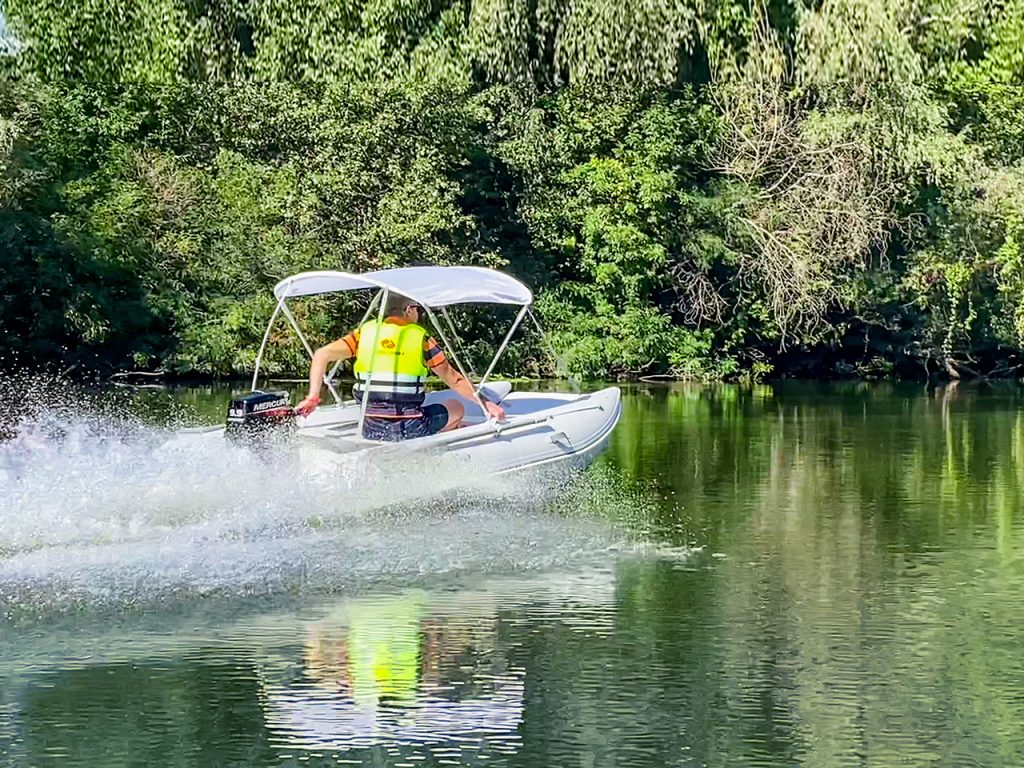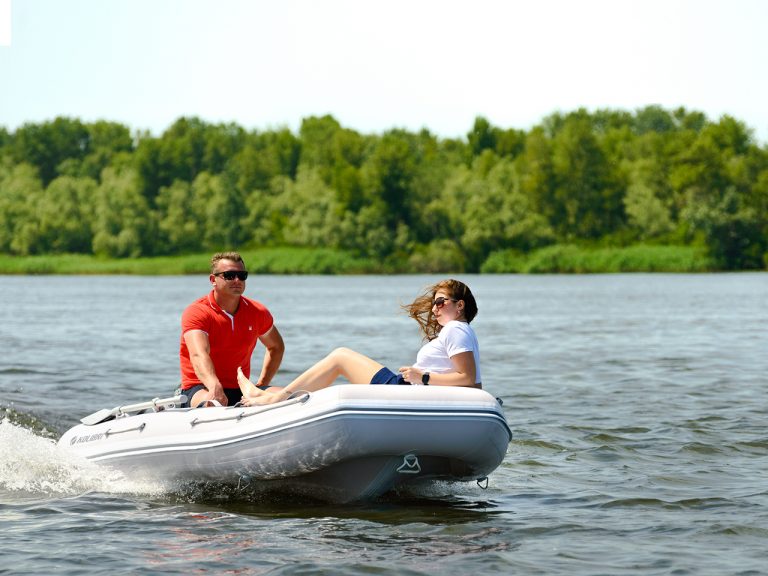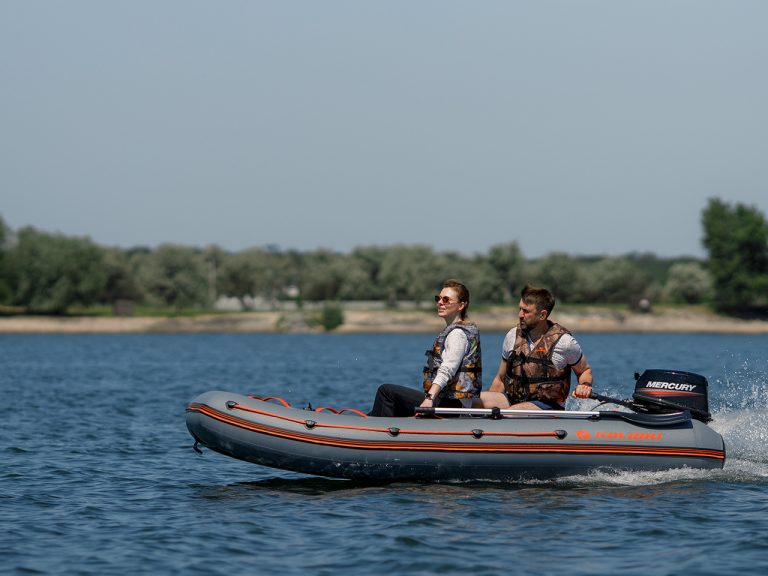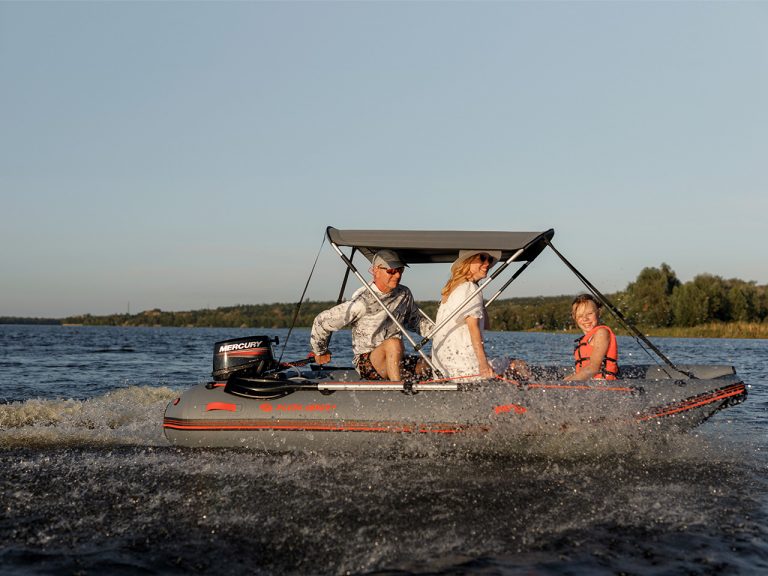Inflatable catamaran. Why is it better than an inflatable boat?

What is a catamaran – this question should be asked from the very beginning of this article. A catamaran is a vessel consisting of two independent parallel hulls interconnected by a transverse deck serving as a cockpit and deck. Catamarans are rowing, sailing and motor.
Since ancient times, the peoples of Polynesia have been using both traditional catamarans and “proa” catamarans – where the smaller float is placed outside the main hull of the vessel. On such boats they mastered many thousands of miles of the Pacific Ocean, settling on many islands in both hemispheres.
What are the advantages of catamarans over traditional monohulls? And if these advantages are clear and obvious, then why are the hulls of all boats not made in the form of catamarans? Which catamaran to choose?
Advantages of a catamaran
Stability
To begin with, a catamaran hull has a much higher stability compared to a mono-hull due to the distribution of displacement between its two float hulls. This is especially true in waves.
The catamaran perfectly withstands a smooth drift in the sea, in particular, with the lateral direction of the waves (beam). An ordinary vessel is forced to turn with its bow to the waves in order to gain greater stability. And in the event of a tail wave, when a monohull vessel risks suddenly changing direction or even capsizing over the bow when entering a wave, the catamaran also behaves much more confidently.
The placement of passengers inside the cockpit of a conventional boat has certain limitations, especially when they move from place to place. The catamaran is devoid of this drawback – even placing the entire crew on one side, the vessel still remains quite stable.
Speed and driving dynamics
The catamaran cuts through the water with a sharp bow of the tubes with a low angle of attack. And the higher the speed, the stronger the lifting force pushes the catamaran out of the water. Therefore, the catamaran can go at different speeds without transients.
Inflatable catamarans go on their two tubes, and the bottom and transom either do not touch the water at all (for traditional catamarans), or touch the water to a lesser extent compared to inflatable boats. The resistance to movement is minimal, and this gives an improvement in speed characteristics and, as a result, fuel economy.
An inflatable boat, unlike a catamaran inflatable boat, has a V-shaped bottom, a U-shaped hull and a transom. All this is immersed in water and creates a noticeable resistance to movement. Starting at low speed, the boat pushes the water in front of it instead of cutting it. At higher speeds, the bow lifts up and out of the water, and the transom sinks deeper. With an increase in speed, the nose rises even more, which is already unsafe – here a powerful motor is already needed to push the hull of the boat out of the water to enter the planing mode of motion.
It is known that each additional passenger in an inflatable boat takes the power of the motor and the glide path can turn into a simple wave pushing in front of you.
The catamaran is devoid of such a disadvantage, due to the distribution of displacement and a smaller area of contact with the water surface. For high-speed planning, a catamaran needs a motor of noticeably lower power, its bow does not lift up and the transom does not sink into the water in the same way as it happens on the glide slope of a conventional boat. Also, for catamarans, the presence of extra crew members on board is not so critical.
We also note that for the reasons described above, the length of the catamaran does not affect its speed characteristics in any way.
On motors of relatively low power, the catamaran has good speed and dynamics, and it makes no sense to put high-power motors on catamarans. Under a powerful motor, a keel boat will show itself better, its speed will be higher than that of a boat catamaran.
On the waves, the glide path of an ordinary boat is often simply impossible, which cannot be said about the high-speed planning of a catamaran. The floats of a catamaran behave like shock absorbers. Of course, this refers to movement along the waves within reasonable limits of wave height.
Maneuvering
With sharp maneuvering at speed, catamarans lean inside the turning path, like keel boats. With a normal turn, the catamaran’s hull runs smoothly, as if on rails.
Boats behave differently in a high-speed maneuver – if the keel ones turn with a roll inward, then the punts at speed can lose their cargo and crew, because. Slope is directed to the outside of the turn and it is very problematic to stay on board.
Driven performance
Due to the peculiarities of the hull, the catamaran does not lower the transom even at speed, it glides smoothly and therefore can pass through shallow water. Although, at low speeds, the draft of a inflatable catamaran boat and a conventional boat is approximately the same.
Do not forget about strengthening the lower part of the tubes of KOLIBRI catamarans with a protective bar – this makes it a water off-road vehicle capable of slipping through a sandbar and not being afraid of areas overgrown with algae.
Which catamaran to choose?
The line of KOLIBRI catamarans consists of four models – from a 4-seat three-meter to a seven-seat beauty boat almost four and a half meters long, which has a carrying capacity of more than 700 kg and can run under a twenty-horsepower engine. What is the best inflatable catamaran boat? Choosing a model by size and carrying capacity is, in general, a simple matter.
Another question is whether, in principle, it is worth giving preference to a catamaran over a conventional keel motor boat? Catamaran or boat? The advantages of inflatable catamaran boats are obvious. We have tried to describe them all above.
Catamarans are noticeably more expensive, and they are generally larger than boats of similar class. Here your personal preferences and the purposes for which you plan to purchase a swimming facility come into force.
In any case, whether it is a KOLIBRI catamaran or a boat from our boatbuilding company, it will be a worthy choice, and the vessel will not let you down and will last for many years.





